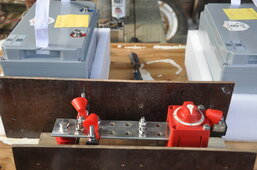Traviss224
New Member
- Joined
- Jun 25, 2022
- Messages
- 295
I am looking at building my own server rack using AOlithium batteries. From what I gathered from Will's videos, he didn't like the small gauge wire.
So my question: if I build a rack out wood (I'm a woodworker) and got copper bar stock. Take the bar stock and made two bus bars out of it. (One on each side)
Could I take those cables that come with the ao lithium battery, cut them, install lugs and run them individually to the bus bar? Then run a main + and - off of that to the inverter?
So my question: if I build a rack out wood (I'm a woodworker) and got copper bar stock. Take the bar stock and made two bus bars out of it. (One on each side)
Could I take those cables that come with the ao lithium battery, cut them, install lugs and run them individually to the bus bar? Then run a main + and - off of that to the inverter?





